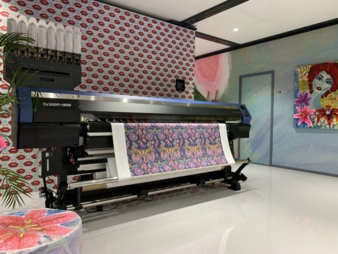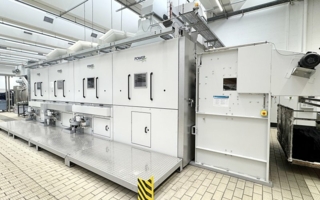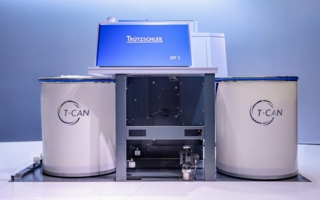25/07/2019 – Entry into textile direct printing and direct transfer printing — auf Deutsch lesen
Mimaki Hybrid Printer
New hybrid printer enables direct-to-textile or direct-to-transfer printing on entry-level printer.
Mimaki Engineering, a leading manufacturer of inkjet printers and cutting systems, announced the first global technology demonstration of a brand-new hybrid digital textile printer from the TX300P series at ITMA 2019. Uniquely featuring both direct-to-textile and direct-to-transfer print capabilities, the new printer achieves unparalleled flexibility in ink combinations and substrates – opening new profitable opportunities for businesses.
Enhanced versatility
The new printer is an evolution of the Mimaki TX300P-1800, with the added capability of printing direct-to-transfer. Crucially, print service providers will benefit from enhanced versatility in terms of fabrics, applications and targeted markets. This affords smaller print service providers with an opportunity to provide a full range of textile printing applications with just one system. Aligned with Mimaki’s Total Solution Provider approach, the printer is compatible with Mimaki’s full range of pre-treating, steaming and washing equipment.
Ronald van den Broek, General Manager Sales EMEA:
“The textile market is still relatively early-on in the adoption of digital printers, with most textiles being printed in the conventional way and a lot of large players dominating the market. With this new hybrid printer, Mimaki has provided an affordable solution that lowers the barriers to entry for smaller print providers. For larger volume production houses, the printer is valuable for smaller runs and the myriad benefits digital production provides.”
Interchangeable platens
Interchangeable platens enable the hybrid nature of the printer. When printing direct-to-textile, excess ink that penetrates through the fabric is drained by a platen with an ink-receiving ditch. This can quickly be swapped out for a vacuum platen, suitable for printing onto heat transfer paper. The printer can also be configured with three different ink combinations, comprising textile pigment/direct sublimation or textile pigment/sublimation transfer or direct sublimation/sublimation transfer. This means more versatility and more possibilities, making it an ideal entry model.





